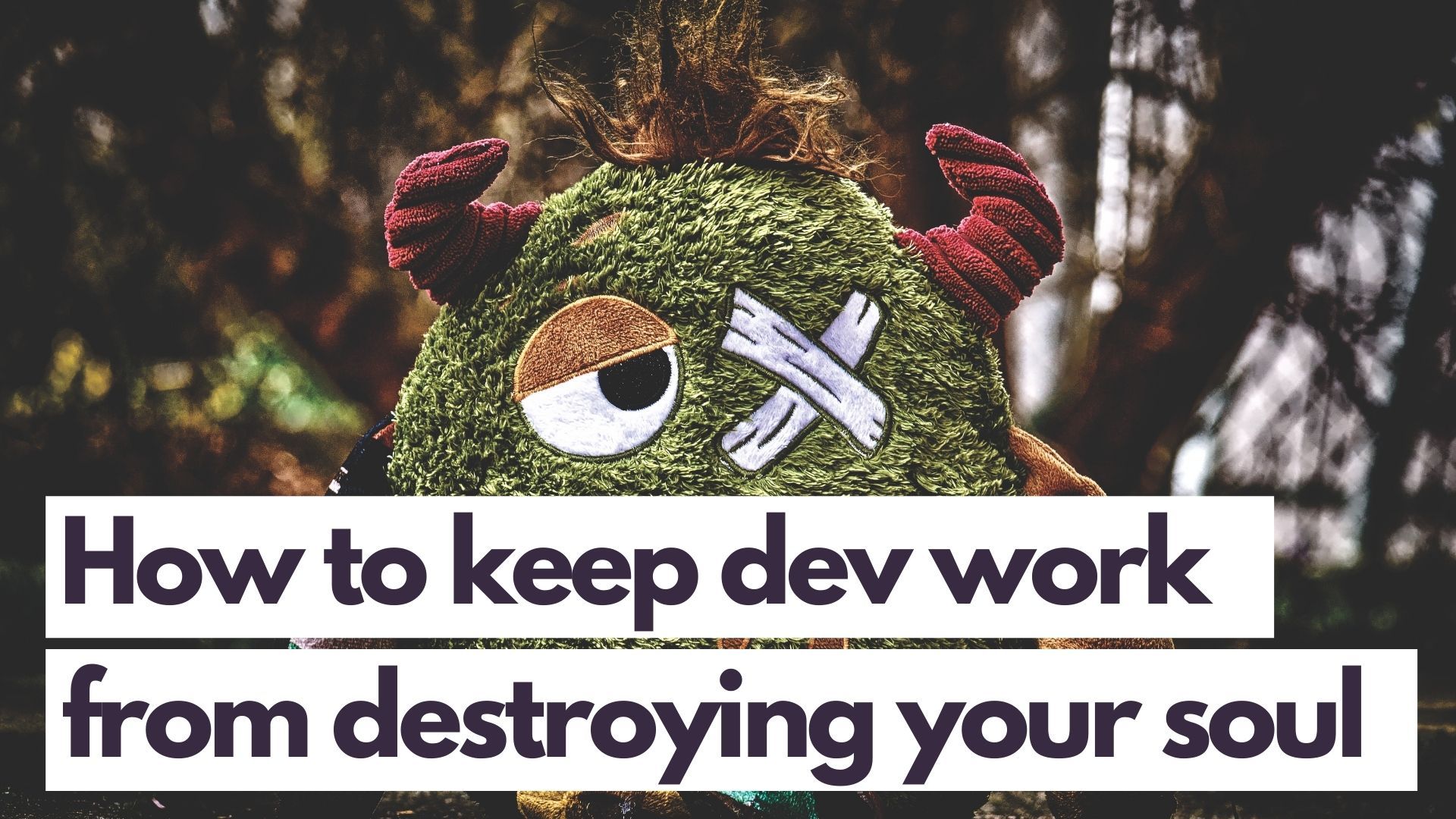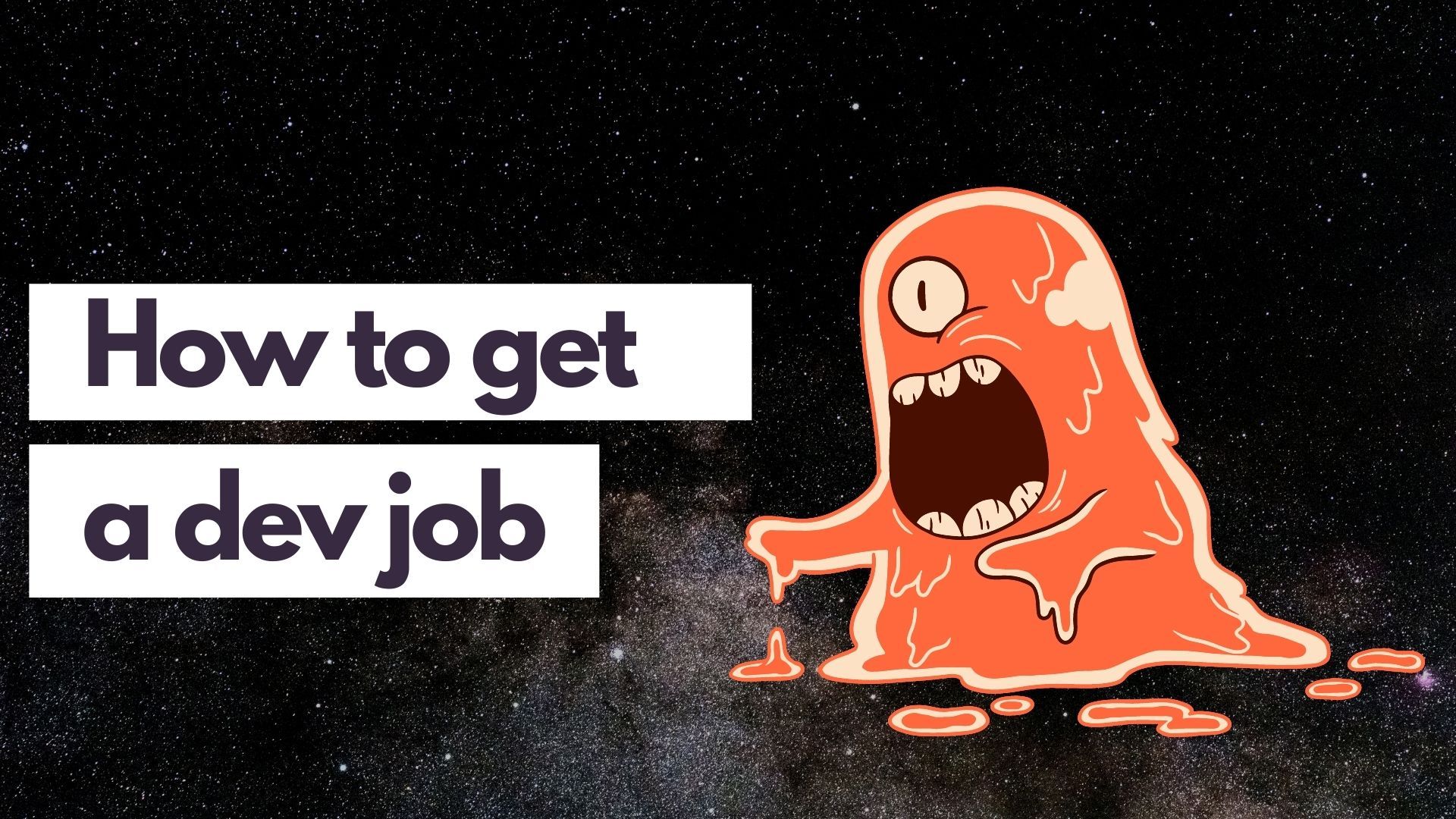How To Get Experience As A Developer When You Have None

If you want to beat the catch 22, draft up your dream resume if you’re stuck for experience. It can make a better roadmap than you’d ever imagine.
You need a job. So you sit down, fingers poised on your keyboard, ready to type — but nothing comes out. You don’t know where to start. You’re stuck on ideas. So you go hunting on LinkedIn, hoping to get some sort of inspiration from your network. But their work experiences aren’t the same as yours.
After an hour or two, you find yourself still staring at the blank page — uncertain about what to write. You dig deep into your soul and the only thing you can spit out as digital ink is a bunch of acronyms without any actual work or portfolio backing.
You look at your resume in dismal despair. It looks pitiful because you know it’s pitiful. But you haven’t got any job experience — and if you do, the ones you have don’t particularly make you proud or excite you at all. You’re stuck and you fear that no one will hire you because your resume sucks.
If this sounds like you, here’s why you need to draft up your dream resume instead.
Dig deep into your imagination and draft up your dream resume
It’s hard to talk about yourself when you have nothing to say. You might be mentally numb from the job you want to escape or just graduated without any actual experience in anything.
You feel overwhelmed by the requirements for each job application you encounter. For starters, there are so many acronyms. So where do you begin?
It’s one of those catch 22 cases where you need the experience to write something, but to write something — you need experience. The issue with this is that you get suckered into thinking that there’s no alternative pathway. The reality is that you don’t need an employer to give you experience.
Tech is a bit different from other industries where you can get a job with hardly any actual ‘experience’, on condition that you sort of at least know what you’re supposed to be doing. That’s how a lot of junior devs start. Anyone can get a tech job it seems — if you take a 6 months Bootcamp, online course, or anything that will get you some sort of working knowledge that will let you produce a portfolio.
This is where your dream resume comes in.
The stuff in your resume doesn’t exist — not yet. The point of this exercise is to help you figure out what kind of experience you want to have in order to get you your dream job. Figure out what industry-based certifications or exams you want to sit. Make up some idea apps, list out their features, platforms supported, technologies used, and cloud service provider.
Then go and make working prototypes of them.
Employers want devs who are job-ready — as much as they can be. If you haven’t got any experience in the field you want to get into, your prototypes will be the thing that demonstrates this.
It will also let you know where your gaps in knowledge are and figure out a game plan to fix them. The best devs are ones that are perpetually learning — because there is always more knowledge to be discovered. The more you have, the easier it becomes to recognize patterns and prevent common bugs from happening.
What to do if you’re stuck for ideas…
So you’re thinking, that sounds fine and dandy — but you still have no idea what app you should make for your prototype. Maybe you should just do a bunch of little ones instead — you know the kind, the ones that can be done in half a day following some YouTube tutorials.
Watching one YouTube tutorial does not qualify your experience in React, node.js, or whatever it is you watched. Real developers can synthesize their knowledge and make something meaningful out of it. Making a standard stock YouTube tutorial portfolio piece is like copying and pasting code from StackOverflow — it shows that you actually don’t know what you’re doing.
Unless you can expand on it and make it different with additional features, pulling in different bits of knowledge to make it something worthwhile to look at. Then that’s not as bad.
So what do you do if you’re stuck for ideas?
For starters, pick an industry — any industry that you want to work in. Don’t think of the technology stack yet because that’s distractionary. Just start with an industry that you want to work in. This will give your resume relevance when compared to those who just reworded the job advert.
Want to work with fintechs? Draft up an idea for something money-related. For example, it could be a budget app, loan calculator app, stock market watching app.
What about the gaming industry? Make a stats tracker or user lookup for your favorite game. There’s always some sort of free API out there in the wild that you can tap into.
Music industry? Make a custom playlist aggregator, or some sort of charts app.
Healthcare? If you have a fitness tracker, tap into the provider’s APIs and make dashboards.
I’m sure you get the gist. These ideas are not new or out of this world. In fact, they are quite familiar ideas. However, rather than a full 100% copy of something you already know, mix and match the features of your favorite existing services to turn it into something unique.
Your prototype doesn’t have to be a monolithic beast with a gazillion features. It just needs to be big enough to show that you’ve got depth of skill. A simple to-do app won’t cut it anymore. A to-do app with authentication, sessioning, cloud storage, and database connection is something a little bit different.
It’ll probably take you a few weeks
Making worthwhile experience for yourself can’t be achieved in a day. Your prototype will probably take a couple of weeks, especially if you haven’t made one before or have been stuck doing SQL datasets for the past 6 months.
If you’re not a frontend kind of person and want a backend job, the actual visuals of it don’t have to be fancy — it just needs to be functional. If you want to get into the frontend and haven’t a clue what you’re doing for the backend, leverage the APIs that are available at your disposal for free. It only takes a Google search to find what you need.
The point is, by the end of the exercise, you’ll have experience to write down. Then when you get to your interview, you can actually talk about something that gave you joy whilst making it — or at least talk about how you solved your bugs. Don’t worry too much about the acronyms. Only drop them in if you actually know it based on your experiences. Don’t be that guy that turned up at the interview, stating he had AWS experience on his resume — then it turns out that it was someone else that gave him everything he needed to do his little portion. This is a true story. I interviewed this person. His justification was that he had AWS ‘experience’ by association.
When it comes the time to write your resume again, your dream resume has already done half the work for you. Edit it so it becomes your real resume, send it to your advertising employer — then draft up another dream one. The point of your dream resume is to act as a guideline for where you want to end up. You might get rejected, you might get a callback for an interview. Whatever it is, when you keep tracking your experience towards your dream resume, you begin to move forward in the direction and field that you want. It’s taking proactive steps to create your own opportunities.
Because when something does pop up, you’re also more likely to get it because you’ve proactively created the experiences required for them. This puts you into a different and more positive kind of catch 22. But if you do nothing then nothing happens in return. To move forward, you need to figure out how to do it yourself first. Don’t wait for someone else to give it to you. When you rely on yourself, you are creating your own reality rather than let others dictate what it should be.
Thank you for reading.



Comments ()